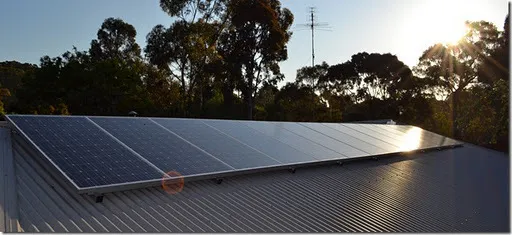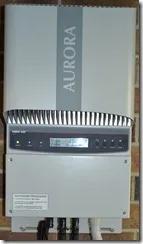Going Solar
 Earlier this year, I started thinking about whether we should invest in getting solar panels installed on our house. I’d seen a friend, as well as my in-laws, get them installed on their houses, and with our family power bills not being an insignificant cost, it seemed like now was the time to do it. Not to mention taking advantage of the South Australian government’s Solar feed-in scheme
Earlier this year, I started thinking about whether we should invest in getting solar panels installed on our house. I’d seen a friend, as well as my in-laws, get them installed on their houses, and with our family power bills not being an insignificant cost, it seemed like now was the time to do it. Not to mention taking advantage of the South Australian government’s Solar feed-in scheme
After getting a number of quotes, I chose Solar Depot to supply and install a 4.56 KW system ( 24 x 190W panels) with an Power-One Aurora PVI-4200 inverter.
Because of our roof orientation, they’ve been installed as two lots of 7 panels facing almost due north (see photo), and one group of 10 facing north-east. North is generally best, so the 14 panels should generate most over summer. In winter, however, they’ll be shaded a fair bit of the day by trees, so my plan is for the north-east panels (which won’t suffer shading as much) to pick up the slack. The inverter is able to take the two different voltages and combine them into one output going back to the grid.
A few weeks after the panels were fitted, our new electricity meter got installed. So rather than just watch the dial spin backwards when the sun is shining, we are now selling electricity back to the grid.
 The inverter turns out to be reasonably easy to get data out of too. The manufacturer distributes a free application that displays all the generation and running statistics. Physically, it has both USB and RS-485 serial interfaces. The USB sounds convenient, but it turns out that it’s not intended for end-users to use (pity). When I get a chance, it would be great to connect the RS-485 back to my Home Server virtual machine and maybe even write a plugin for Media Center to display our power generation!
The inverter turns out to be reasonably easy to get data out of too. The manufacturer distributes a free application that displays all the generation and running statistics. Physically, it has both USB and RS-485 serial interfaces. The USB sounds convenient, but it turns out that it’s not intended for end-users to use (pity). When I get a chance, it would be great to connect the RS-485 back to my Home Server virtual machine and maybe even write a plugin for Media Center to display our power generation!
This wasn’t a cheap system (our mortgage seems to have taken a bit of a hit over the last few months), but the intention is that all going well, we won’t have any more power bills to worry about for the foreseeable future.